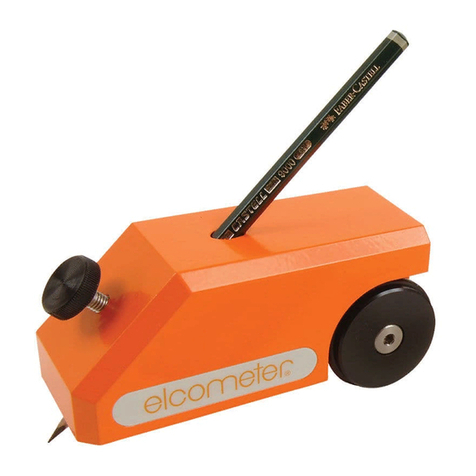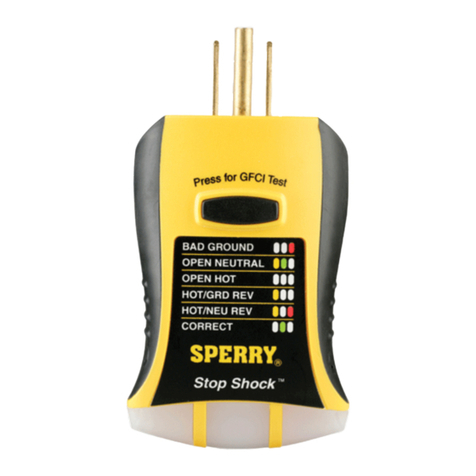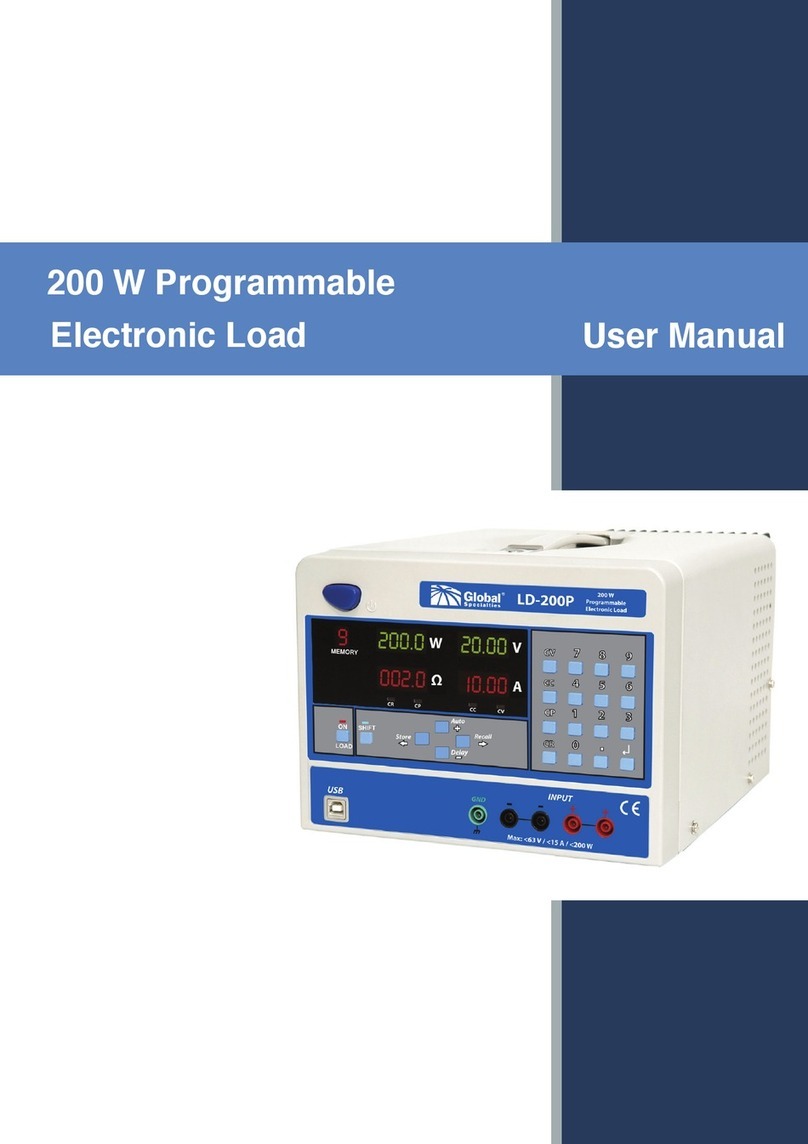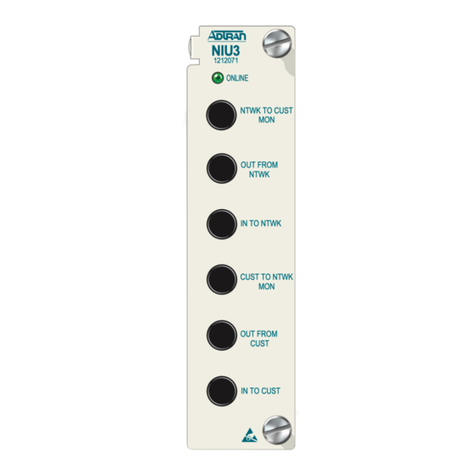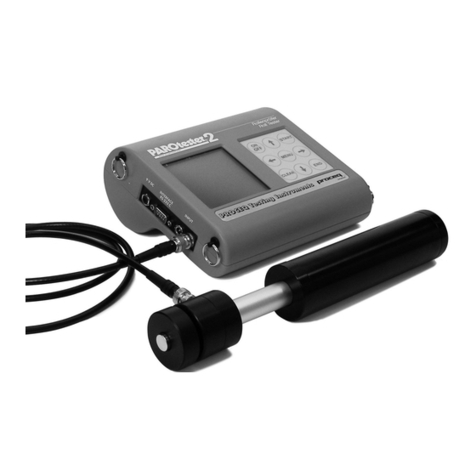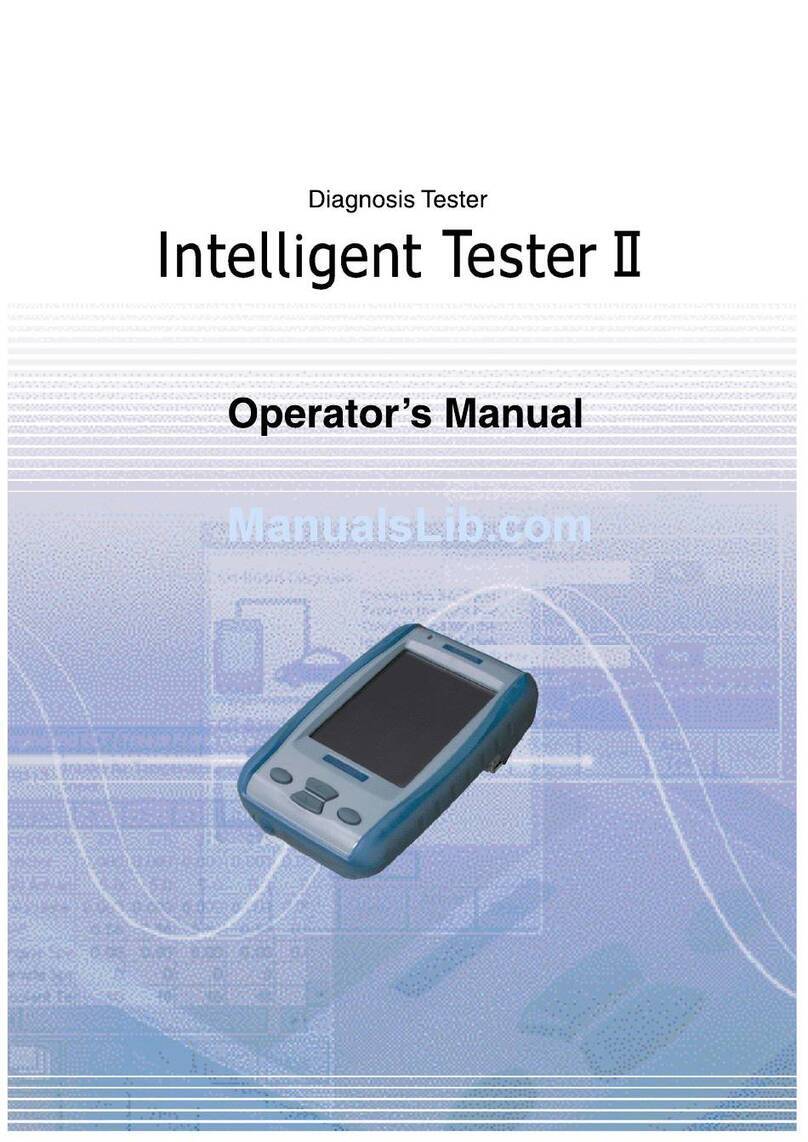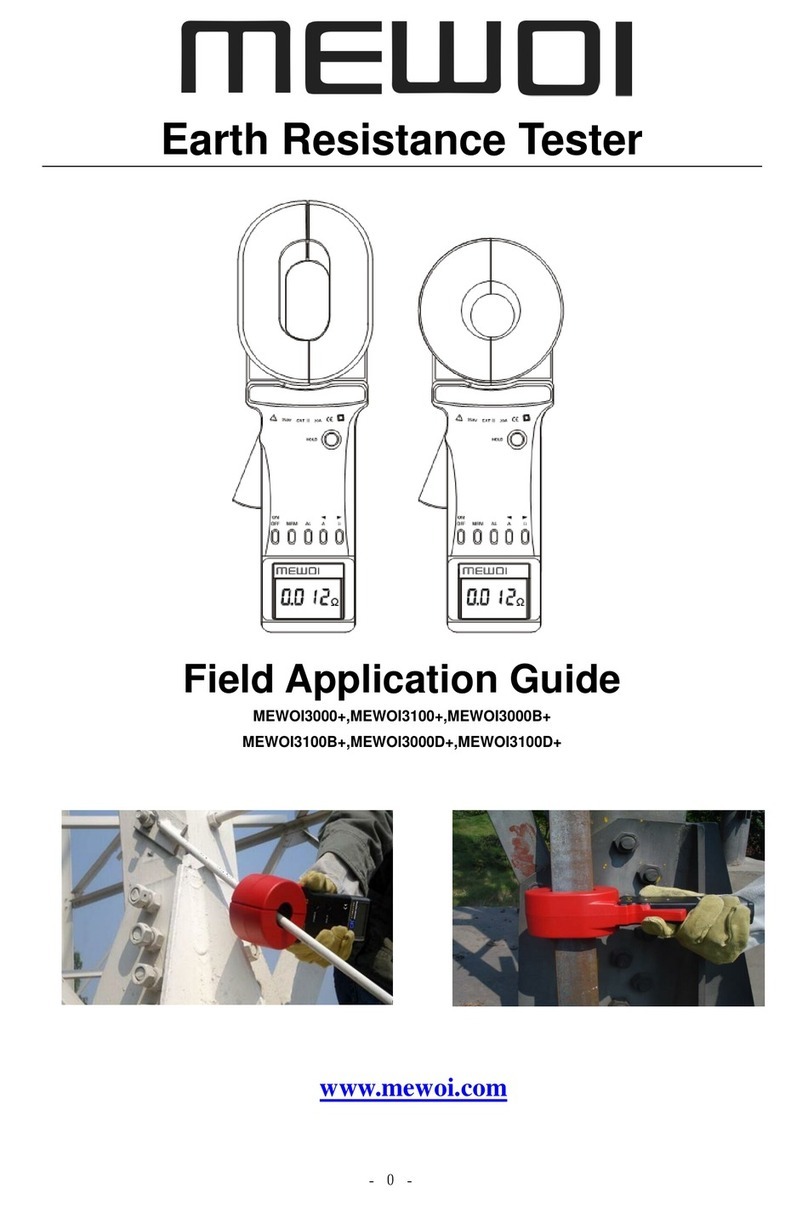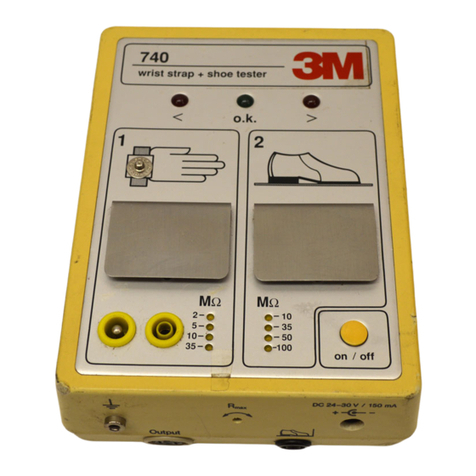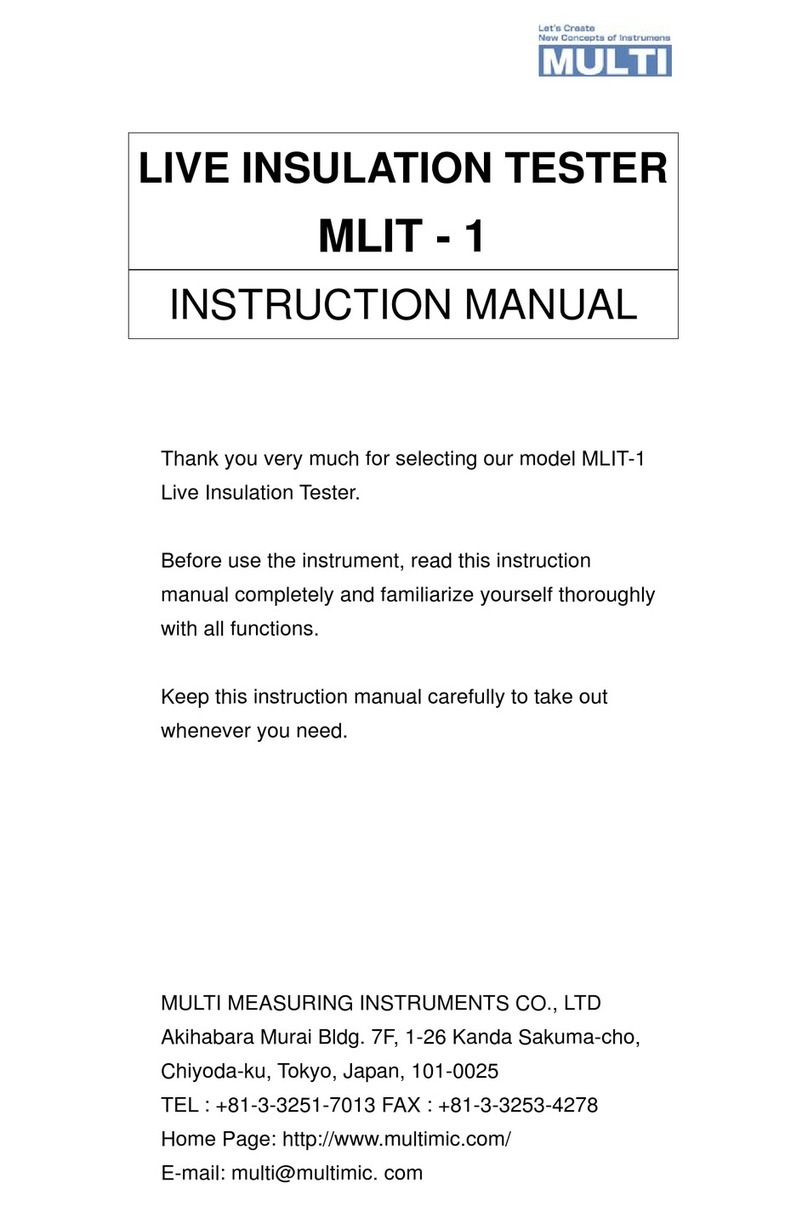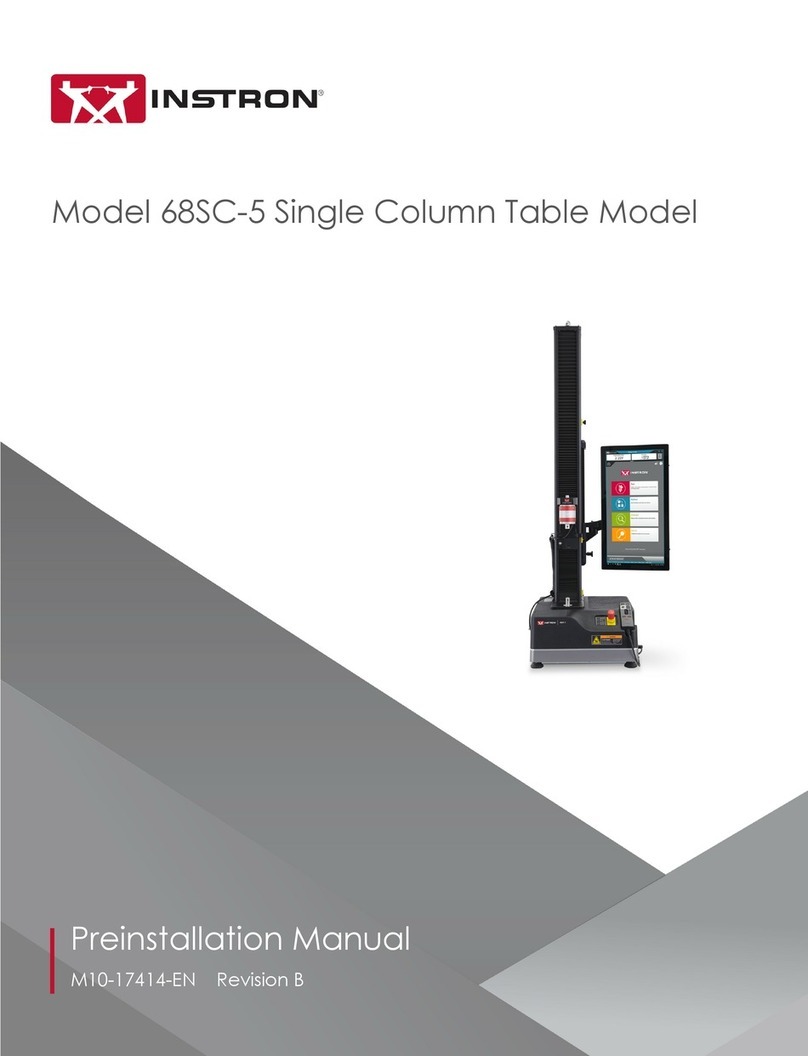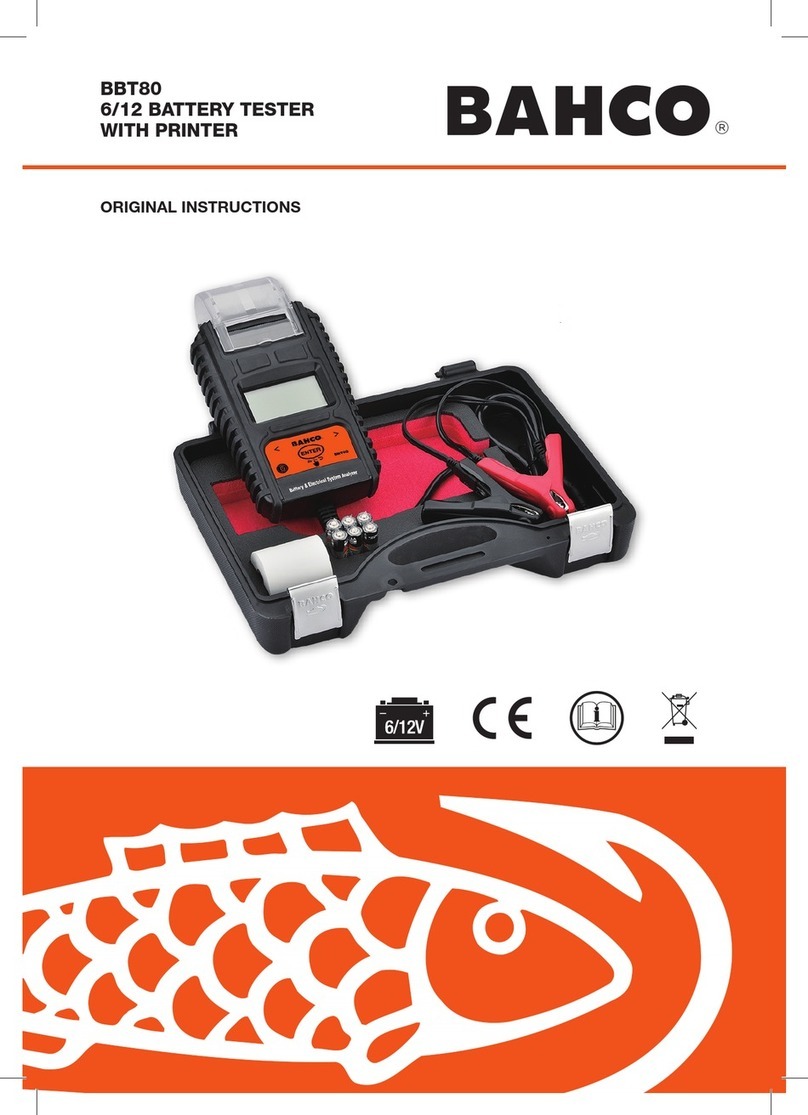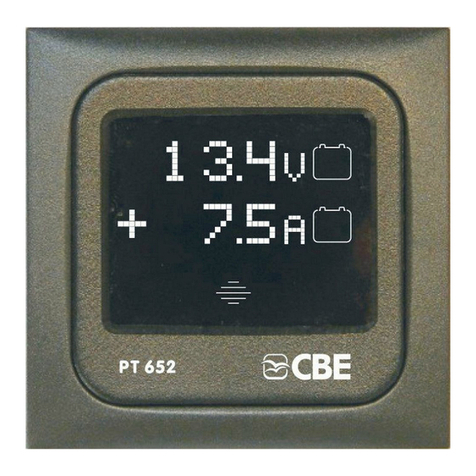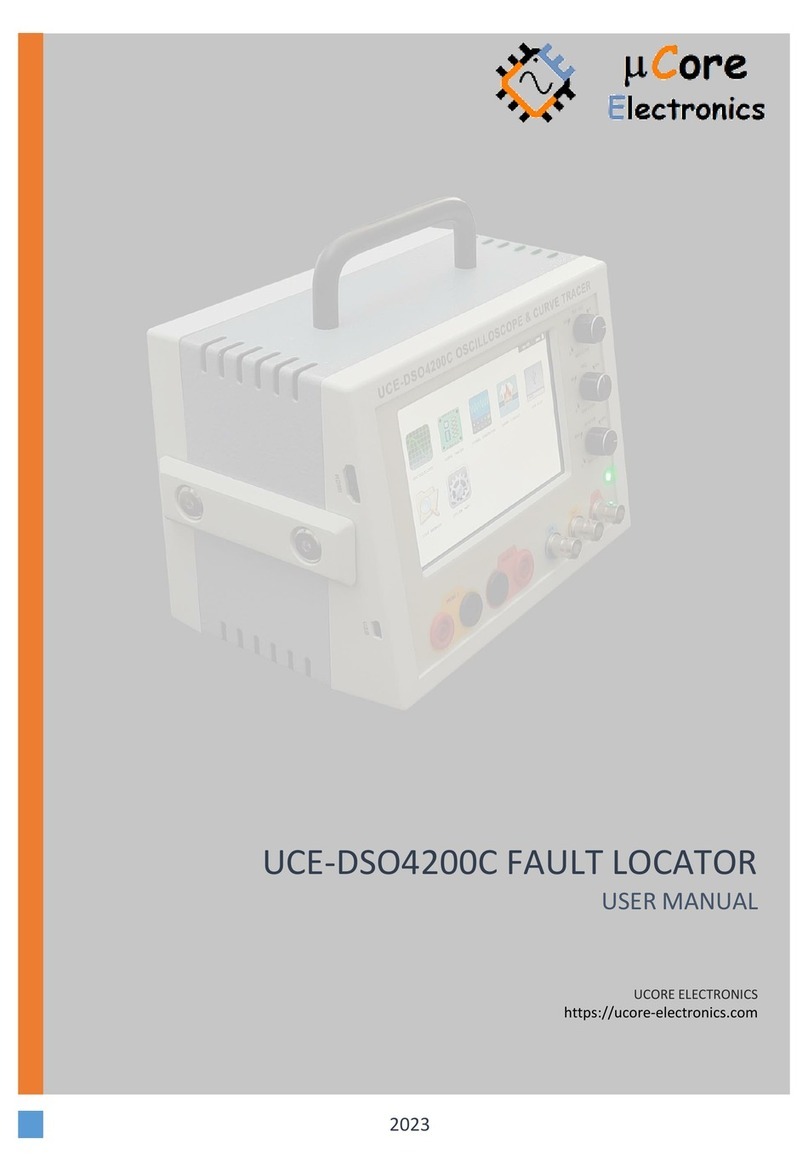These measurements are taken automatically at a test voltage of 100 volts, unless the test voltage range
switch is manually switched to 10 volts. 10 volts should only be used for measuring dissipative
resistances, if there is a high risk of damaging components on or around the area under test. At any
other time the meter should be set to 10/100 volts. The RED segment indicates Insulative > 1.0 x 10/12.
For a simple visible check through its range, the meter will indicate Conductive, Dissipative and
Insulative via three LEDs, GREEN = Conductive YELLOW = Dissipative RED = Insulative.
5) The model SRM-3 and the kit includes SP-01 square probe for checking surface resistance in Ohms
per square as used in standard ASTM-D-257, as well as point to point resistance. When using SP-01
square probe, connect the RED and BLACK test leads to their corresponding RED and BLACK sockets.
Place one 2.5 Kilo (51b) weight on the surface of the square probe and press the test button, the
measurement now taken is in Ohms per square.
The SRM3 conforms to the current, IEC61340-5-2:2018, IEC61340-2-3, IEC61340-4-1, ANSI 20.20
standards.
Instruction Manual Guide - SRM3
Calibration
All resistances are in-built using matched fixed resistors. They are measured using an ohm meter which
is of known accuracy and standards used are traceable to UKAS. No variable resistors e.g.
potentiometers are used. The resistances should nevertheless be re-checked once a year. Calibration is
carried out with a Resistance Decade Box.
The resistance decade box required will need a range of either from > 1 kilohm to 999 meg ohms or
10^(9). Measurements greater than 10^(9) are calculated using cad generated techniques, as high
resistances greater than 10^(9).
Connect the test leads from the resistance decade box to the Red and Black banana sockets of the
checker. Set the decade box to the desired resistance i.e. 10^(3) = 1 K, then press and hold the checker's
test button. The 10^(3) LED should light and the analogue meter should read 10^(3), 10 K = 10^(4), the
analogue meter should read this and so on. To measure the changeover point between decades,
increase the resistance of the decade box while pressing the checker's test button. Record the
resistance when the next analogue meter moves up decade permanently (this is the changeover
resistance).
Please note that the checker has no internal parts to adjust, so verification of calibration can be
achieved by using the above process. If verification cannot be achieved the unit should be returned to
the supplier.
The information contained within this instruction manual sheet is for guidance only. We make no warranties expressed or implied and
assume no liability regarding any use of this information.
